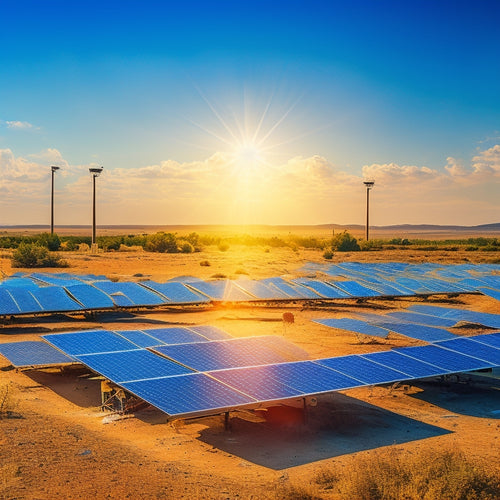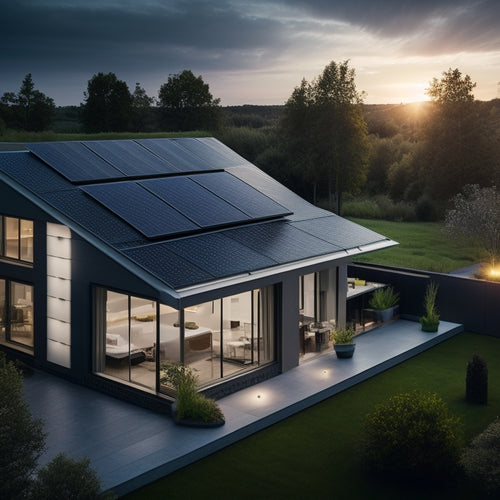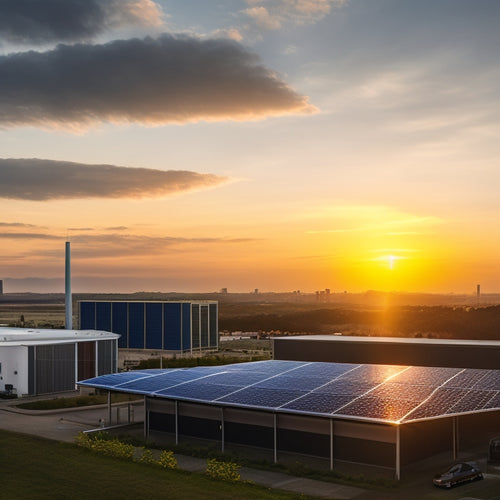
What Outdoor Camping Equipment Do I Need
Share
To guarantee a successful outdoor camping trip, you need quality gear that emphasizes durability, comfort, and practicality. Start with a weather-resistant tent made from ripstop nylon and an insulated sleeping bag for warmth. Don't forget a lightweight cooking stove and user-friendly cooking utensils. Consider a comfortable sleeping pad and a portable chair for relaxation. Packing should be efficient, so use compression sacks for your gear and organize it by category. Always assess your activity level to select gear suited for your specific plans. There's plenty more to cover on preparing for your journey ahead.
At a Glance
- Invest in a durable tent made from high-quality materials and weather-resistant features to ensure protection and comfort during your camping trip.
- Pack comfortable sleeping solutions like a sleeping pad, cozy blankets, or a camping cot to enhance your rest and recovery.
- Bring weather protection gear, including waterproof jackets, breathable rain gear, and sun protection like wide-brimmed hats to stay comfortable in various conditions.
- Organize your gear efficiently using packing cubes or bags to streamline access to essentials while at the campsite.
- Assess your activity level to choose appropriate gear, such as lightweight options for hiking or bulkier items for car camping.
Durability in Harsh Conditions
When you're camping in harsh conditions, the quality of materials used in your gear is essential for your safety and comfort.
Look for weather-resistant features in tents, sleeping bags, and other equipment to guarantee they can withstand rain, wind, and temperature fluctuations.
Additionally, consider incorporating sustainable lighting options like portable solar lights, which provide reliable illumination while reducing your carbon footprint.
Understanding these factors helps you choose durable gear that performs well in any environment.
Material Quality Importance
Choosing the right materials for outdoor camping equipment is essential for ensuring durability in harsh conditions. When you're out in the wild, you need gear that can withstand the elements and rough handling. Focus on high-quality material types like ripstop nylon for tents, aluminum for poles, and insulated fabrics for sleeping bags. These materials have been engineered to meet stringent quality standards, ensuring they can handle extreme temperatures, moisture, and wear.
Look for features like reinforced stitching and heavy-duty zippers, as these details can make a significant difference in longevity. Equipment made from subpar materials might seem cheaper upfront, but you'll likely spend more in the long run replacing it. Investing in durable, high-quality items gives you peace of mind, allowing you to immerse yourself in your exploration without worrying about your gear failing.
Additionally, consider how materials can affect weight and packability. Lightweight yet durable items can enhance your freedom to roam, letting you carry less while still being prepared for whatever nature throws at you.
Prioritize quality, and you'll find that your outdoor experiences become more enjoyable and worry-free.
Weather Resistance Features
A reliable outdoor camping setup demands equipment with exceptional weather resistance features to guarantee durability in harsh conditions. You need gear designed to withstand the elements, ensuring your excursions remain enjoyable and safe.
Look for tents made from high-quality, waterproof fabrics that offer moisture management to keep you dry. Seam-sealed construction is critical; it helps prevent leaks during unexpected downpours.
Temperature regulation is another key aspect. Insulated sleeping bags and pads can help you maintain warmth during chilly nights, while breathable materials allow for airflow when temperatures rise. A well-ventilated tent can also combat condensation, keeping the interior comfortable and dry.
When selecting clothing, opt for moisture-wicking base layers and insulated outer layers to adapt to changing weather.
Don't forget about your footwear; waterproof boots with good traction are essential for traversing wet or uneven terrain.
Enhanced Comfort During Camping
When you're camping, a good night's sleep is essential, so investing in comfortable sleeping solutions like high-quality sleeping bags and inflatable mattresses can greatly improve your experience.
Additionally, incorporating eco-friendly gear, such as solar-powered tents, enhances your comfort while also promoting sustainability.
Weather protection gear, such as durable tents and waterproof jackets, guarantees you stay dry and cozy regardless of the elements.
Comfortable Sleeping Solutions
Enhanced comfort during camping hinges on selecting the right sleeping solutions, which can change a rough night under the stars into a restful experience.
To achieve this, start with a high-quality sleeping pad. These pads provide essential cushioning and insulation from the cold ground, ensuring you won't wake up sore. Look for options that balance portability with comfort; inflatable models often offer the best of both worlds, packing down small while still providing adequate support.
Next, don't underestimate the importance of cozy blankets. A good blanket not only keeps you warm but also adds a layer of comfort that can make your sleeping setup feel more like home. Consider lightweight, packable options made from materials that retain warmth without bulk.
Lastly, if you prefer a more structured sleeping experience, a camping cot can raise you off the ground, enhancing ventilation and comfort.
Couple it with your cozy blankets for an unbeatable setup. By investing in these key elements—sleeping pads and cozy blankets—you'll create a sleeping arrangement that invites relaxation, allowing you to recharge for your next excursion.
Weather Protection Gear
Weather protection gear is essential for ensuring your camping experience remains enjoyable, regardless of the conditions outside. You'll want to equip yourself with both rain gear and sun protection to tackle the elements effectively.
Start with a reliable waterproof jacket and pants. These not only keep you dry during unexpected downpours but also allow for breathability, preventing overheating. Look for gear with sealed seams and adjustable hoods for added coverage.
Don't forget about waterproof footwear; your feet deserve protection from the wet ground.
For sunny days, sun protection gear is equally important. A wide-brimmed hat and UV-protective clothing can shield you from harmful rays. Sunglasses with UV protection will help you see clearly while preserving your eyesight.
Applying a high-SPF sunscreen to exposed skin will further minimize the risk of sunburn.
Lastly, consider portable tarps or canopies that provide extra shelter at your campsite. They're versatile for both rain and sun, enabling you to enjoy meals or relaxation outdoors, no matter the weather.
With the right weather protection gear, you can welcome the freedom of the great outdoors without worry.
User-Friendly Setup Process
When you set up your campsite, a user-friendly process can make all the difference.
Start with easy tent assembly tips to streamline your setup, and verify you have a reliable power source by regularly checking your battery water maintenance to prevent any issues during your trip.
Follow that with quick gear organization hacks to keep your space efficient.
These strategies not only save time but also enhance your overall camping experience.
Easy Tent Assembly Tips
Setting up a tent can often feel overwhelming, but with the right techniques, you can simplify the process considerably. Start by choosing a flat, dry area free from sharp objects. Unpack your tent and lay out all components, including poles and stakes. Familiarize yourself with the setup instructions; knowing your tent's unique requirements is vital.
Here's a quick reference table for easy assembly:
| Step | Tips |
|---|---|
| 1. Lay out the footprint | Make certain it's level and clear |
| 2. Assemble poles | Use an assembly tool if needed |
| 3. Attach tent fabric | Start from the back to front |
| 4. Secure with stakes | Angle stakes away from tent |
| 5. Check for tension | Make certain fabric is taut |
For smooth assembly, consider these tent maintenance tips: always clean your tent after use and store it dry to prevent mold. Additionally, keep essential assembly tool recommendations handy, like a multi-tool or mallet, to expedite the process. With these tips, you'll be enjoying the great outdoors in no time!
Quick Gear Organization Hacks
Organizing your camping gear efficiently can greatly enhance your outdoor experience. To achieve this, you'll want to implement effective gear storage solutions that maximize space and accessibility.
Start by categorizing your items into clear groups: cooking gear, sleeping equipment, clothing, and first aid supplies. This will help you locate essentials quickly when you're out in the wild.
Use packing efficiency tips like compression sacks for sleeping bags and clothing. These not only save space but also keep your gear dry.
For smaller items, consider using clear plastic bins; they're easy to stack and see through, allowing for quick identification.
Label everything—bins, bags, and even your cooler. A simple label can save you time rummaging through your gear.
When you set up your campsite, arrange items logically based on usage frequency; keep cooking gear near your cooking area and sleeping gear close to your tent.
Assess Your Activity Level
When planning your camping trip, it's essential to assess your activity level as a camper.
Whether you're a beginner or an experienced outdoorsman, your gear needs will vary considerably based on the activities you intend to pursue.
For instance, if you plan on spending extended periods in remote areas, consider incorporating the benefits of portable solar panels into your gear list to guarantee you have a reliable power source.
Identifying your skill level and activity-specific requirements guarantees you pack the right equipment for a safe and enjoyable experience.
Beginner vs. Experienced Campers
Evaluating your activity level is essential for choosing the right camping equipment, especially when deciding whether you're a beginner or an experienced camper.
If you're new to camping, adopting a practical camping mindset is key. You'll want to start with basic gear that's user-friendly and budget-conscious. Focus on essentials like a reliable tent, sleeping bag, and a cooking setup that's easy to operate. This approach allows you to enjoy the freedom of the outdoors without overwhelming yourself with complicated gear.
On the other hand, if you're an experienced camper, you likely have a better understanding of your specific needs and preferences. Your gear budget may allow for higher-quality equipment that enhances your camping experience, such as lightweight backpacks, advanced cooking gear, or specialized clothing.
You might also consider investing in gear that supports more adventurous activities like hiking or kayaking.
Ultimately, recognizing your activity level helps you make informed decisions that align with your camping goals. Whether you're just starting or you've camped countless times, choosing the right equipment will enhance your outdoor experience and keep you comfortable in the wild.
Activity-Specific Gear Needs
Understanding your specific activity level is vital for selecting the right camping gear customized to your needs. Whether you're hiking, fishing, or simply enjoying a weekend in the woods, the camping essentials you choose should align with your activities.
For instance, if you plan on hiking long distances, lightweight gear like a compact tent and sleeping bag will enhance your mobility and comfort. On the other hand, if you're just car camping, you might opt for bulkier gear that prioritizes comfort over weight.
Assess your activity suitability to guarantee you pack the right items. If you're into water sports, waterproof bags and gear are essential. For those who enjoy cooking outdoors, invest in a portable stove and quality utensils. Each activity demands specific tools, so it's key to evaluate what you'll be doing.
Make a checklist based on your planned activities, making sure you don't overlook any vital camping essentials.
Lightweight for Easy Transport
When you're packing for a camping trip, choosing essential lightweight gear is vital for easy transport.
This gear not only reduces the overall weight of your pack but also enhances your mobility on the trail.
Prioritizing lightweight options guarantees you can carry everything you need without unnecessary strain.
Essential Lightweight Gear
In the quest for an enjoyable outdoor experience, packing essential lightweight gear can make all the difference. When you're hiking or camping, every ounce counts.
Start with a compact tent that offers durability without the bulk. Look for materials like ripstop nylon, which balances weight and strength.
For cooking equipment, consider a lightweight stove and nesting cookware. A portable camp stove can efficiently boil water or cook meals while being easy to pack.
Don't forget a reliable, lightweight multi-tool for food prep and repairs.
Navigation tools are crucial for discovering uncharted territories. A compact GPS device or smartphone with offline maps can provide guidance, while a traditional compass and map can serve as backups.
These tools are necessary for maintaining your sense of direction and ensuring you find your way back.
Lastly, pack a lightweight sleeping bag and inflatable sleeping pad. These will keep you comfortable while minimizing weight.
Frequently Asked Questions
What Types of Tents Are Best for Different Weather Conditions?
When choosing tents, consider materials and weather ratings. For rain, opt for waterproof fabrics; for cold, look for insulated designs. Hot weather benefits from breathable materials. Each tent type enhances your freedom in diverse conditions.
How Do I Clean and Maintain My Camping Equipment?
To keep your gear in top shape, regularly clean it using appropriate techniques. Store equipment properly to prevent damage. Maintain a routine check-up, ensuring everything's ready for your next expedition under the stars, like a true nomad.
What Safety Gear Is Essential for Outdoor Camping?
When you're camping, having essential safety gear is vital. Always pack a first aid kit and emergency tools like a whistle, multi-tool, and flashlight. These items can make a significant difference in unexpected situations.
How Do I Choose the Right Sleeping Bag for My Needs?
Choosing a sleeping bag's like finding a soulmate—too much insulation, and you're sweating like a pig; too little, and you're freezing. Match your sleeping bag temperature with your journey, and enjoy cozy nights under the stars!
Are There Eco-Friendly Camping Equipment Options Available?
Yes, eco-friendly camping equipment options exist. You can find gear made from sustainable materials and biodegradable products, ensuring your outdoor excursions minimize environmental impact while still providing the freedom and comfort you seek in nature.
Explore More
When preparing for your next outdoor excursion, remember that the right camping equipment can alter your experience. Envision yourself nestled under a starlit sky, wrapped in warmth from a durable sleeping bag, while the scent of pine fills the air. With user-friendly gear that's light enough to carry, you'll welcome the wild without hassle. Assess your activity level, and pack wisely; with the right tools, you'll create unforgettable memories in the great outdoors.
Related Posts
-

What Happens Without a Charge Controller in Solar Panels
Without a charge controller in your solar panel system, you risk overheating batteries due to overcharging, which can...
-

Home Solar Battery
You're opting for a home solar battery that allows you to utilize the power of the sun during the day and use it at n...
-

Advantages of Commercial Solar Battery On-Site Storage
By investing in a commercial solar battery on-site storage system, you can greatly reduce your energy grid dependence...


